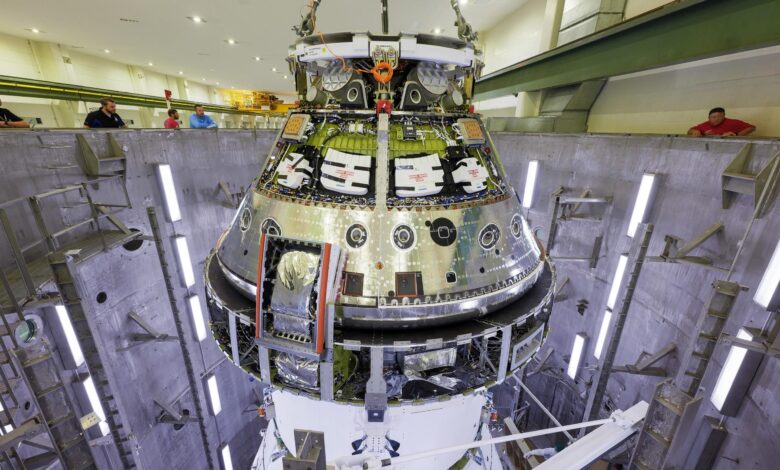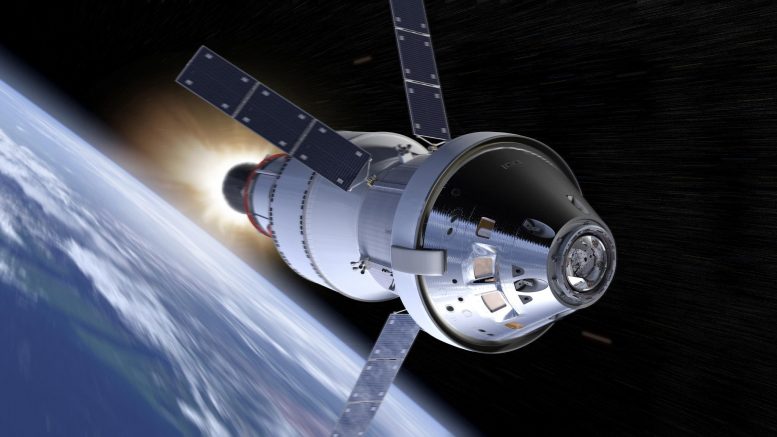NASA’s Orion Spacecraft Endures Ultimate Space Simulation


On June 28, 2024, technicians extracted NASA’s Orion spacecraft from the Final Assembly and System Testing cell. This spacecraft, slated for the Artemis II moon orbit mission, has recently completed a series of comprehensive tests and assemblies, focusing on verifying the performance of all subsystems and ensuring the integrity of its propulsion systems. Credit: NASA/Radislav Sinyak
Technicians lifted NASA’s Orion spacecraft out of the Final Assembly and System Testing cell on June 28, 2024. The integrated spacecraft, which will be used for the Artemis II mission to orbit the Moon, has been undergoing final rounds of testing and assembly. This included end-to-end performance verification of its subsystems and checking for leaks in its propulsion systems.
A 30-ton crane returned Orion into the recently renovated altitude chamber where it underwent electromagnetic testing. The spacecraft now will undergo a series of tests that will subject it to a near-vacuum environment by removing air, thus creating a space where the pressure is extremely low. This results in no atmosphere, similar to the one the spacecraft will experience during future lunar missions. The data recorded during these tests will be used to qualify the spacecraft to safely fly the Artemis II astronauts through the harsh environment of space.

The Orion spacecraft, integral to NASA’s Artemis II mission, will transport astronauts around the Moon, testing human spaceflight capabilities beyond Earth. Artemis II will serve as a proving ground for the complex systems needed to sustain life and support deep space exploration, highlighting Orion’s design for safety and habitability in the harsh environment of space. Credit: NASA
NASA’s Orion spacecraft is designed as a critical component of the agency’s deep space exploration plans, which include sending humans to the Moon and potentially beyond to Mars. Orion is intended to facilitate human exploration of the solar system, providing a safe habitat for astronauts during long-duration missions. The spacecraft comprises two main parts: the Crew Module (CM), built by Lockheed Martin, which houses the astronauts and supports life during space travel, and the European Service Module (ESM), provided by the European Space Agency (ESA), which supplies power, propulsion, and thermal control.
Orion is equipped with advanced technologies to ensure high safety standards, including heat shields capable of withstanding the intense heat generated during re-entry into Earth’s atmosphere. The spacecraft is also designed to be reusable for multiple missions. It plays a pivotal role in NASA’s Artemis program, aiming to return humans to the Moon and establish a sustainable presence there to pave the way for future manned missions to Mars. The Orion spacecraft’s first uncrewed test flight took place in 2014, and it continues to undergo rigorous testing and development to meet its future mission objectives.



